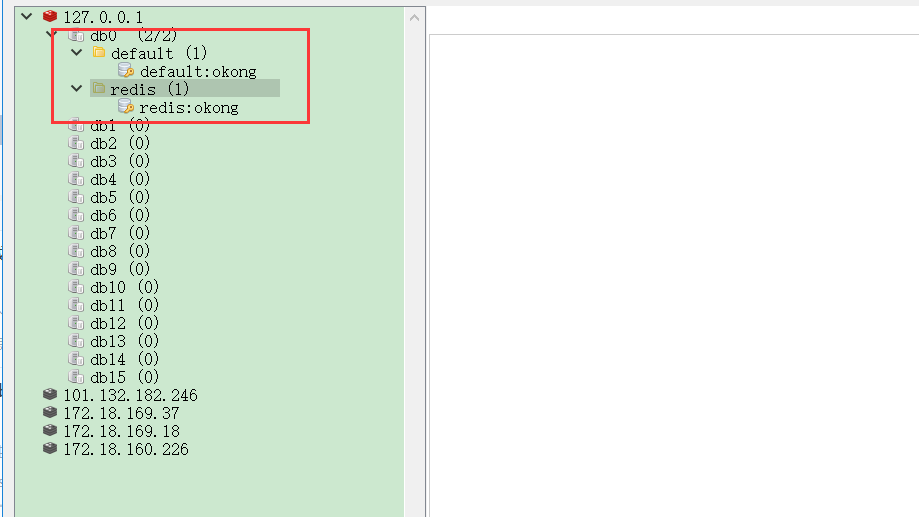SpringBoot | 集成多CacheManager
前言
今天有网友咨询了一个问题:如何在一个工程中使用多种缓存进行差异化缓存,即实现多个
cacheManager灵活切换。原来没有遇见这种场景,今天下班抽空试了下,以下就把如何实现的简单记录下。
一点知识
在
SpringBoot中使用Spring Cache可以轻松实现缓存,是Spring框架提供的对缓存使用的抽象类,支持多种缓存,比如Redis、EHCache等,集成很方便。同时提供了多种注解来简化缓存的使用,可对方法进行缓存。具体如何集成,之前的文章已经有详细介绍了,感兴趣的同学可点击:SpringBoot | 第十一章:Redis的集成和简单使用。这里就不再阐述了,一下简单较少下cacheManager。
关于CacheMananger
针对不同的缓存技术,需要实现不同的cacheManager,Spring定义了如下的cacheManger实现。
| CacheManger | 描述 |
|---|---|
| SimpleCacheManager | 使用简单的Collection来存储缓存,主要用于测试 |
| ConcurrentMapCacheManager | 使用ConcurrentMap作为缓存技术(默认) |
| NoOpCacheManager | 测试用 |
| EhCacheCacheManager | 使用EhCache作为缓存技术,以前在hibernate的时候经常用 |
| GuavaCacheManager | 使用google guava的GuavaCache作为缓存技术 |
| HazelcastCacheManager | 使用Hazelcast作为缓存技术 |
| JCacheCacheManager | 使用JCache标准的实现作为缓存技术,如Apache Commons JCS |
| RedisCacheManager | 使用Redis作为缓存技术 |
常规的SpringBoot已经为我们自动配置了EhCache、Collection、Guava、ConcurrentMap等缓存,默认使用ConcurrentMapCacheManager。SpringBoot的application.properties配置文件,使用spring.cache前缀的属性进行配置。
application配置
spring.cache.type=#缓存的技术类型 spring.cache.cache-names=应用程序启动创建缓存的名称 spring.cache.ehcache.config=ehcache的配置文件位置 spring.cache.infinispan.config=infinispan的配置文件位置 spring.cache.jcache.config=jcache配置文件位置 spring.cache.jcache.provider=当多个jcache实现类时,指定选择jcache的实现类
这里为了演示多cacheManager实现,这里使用redis和ehcache进行集成。
集成Redis和ehcache
0.pom文件依赖
<!-- redis cache --> <dependency> <groupId>org.springframework.boot</groupId> <artifactId>spring-boot-starter-data-redis</artifactId> </dependency> <!-- ehcache缓存 --> <dependency> <groupId>net.sf.ehcache</groupId> <artifactId>ehcache</artifactId> </dependency>
1.创建配置类。
CacheConfig.java
/**
*
* @ClassName 类名:CacheConfig
* @Description 功能说明:缓存配置类
* <p>
* TODO
*</p>
************************************************************************
* @date 创建日期:2019年3月7日
* @author 创建人:oKong
* @version 版本号:V1.0
*<p>
***************************修订记录*************************************
*
* 2019年3月7日 oKong 创建该类功能。
*
***********************************************************************
*</p>
*/@Configuration@EnableCachingpublic class CacheConfig {
/**
* cacheManager名称
*/
public interface CacheManagerName { /**
* redis
*/
String REDIS_CACHE_MANAGER = "redisCacheManager"; /**
* ehCache
*/
String EHCACHE_CACHE_MAANGER = "ehCacheCacheManager";
} /**
* 定义 StringRedisTemplate ,指定序列号和反序列化的处理类
* @param factory
* @return
*/
@Bean
public RedisTemplate<String, String> redisTemplate(RedisConnectionFactory factory) {
StringRedisTemplate template = new StringRedisTemplate(factory);
Jackson2JsonRedisSerializer<Object> jackson2JsonRedisSerializer = new Jackson2JsonRedisSerializer<>(
Object.class);
ObjectMapper om = new ObjectMapper();
om.setVisibility(PropertyAccessor.ALL, JsonAutoDetect.Visibility.ANY);
om.enableDefaultTyping(ObjectMapper.DefaultTyping.NON_FINAL);
jackson2JsonRedisSerializer.setObjectMapper(om); //序列化 值时使用此序列化方法
template.setValueSerializer(jackson2JsonRedisSerializer);
template.afterPropertiesSet(); return template;
}
@Bean(CacheConfig.CacheManagerName.REDIS_CACHE_MANAGER) @Primary
public RedisCacheManager redisCacheManager(RedisTemplate<String,String> redisTemplate) {
RedisCacheManager rcm = new RedisCacheManager(redisTemplate); //使用前缀
rcm.setUsePrefix(true); //缓存分割符 默认为 ":"// rcm.setCachePrefix(new DefaultRedisCachePrefix(":"));
//设置缓存过期时间
//rcm.setDefaultExpiration(60);//秒
return rcm;
}
@Bean(CacheConfig.CacheManagerName.EHCACHE_CACHE_MAANGER)
public EhCacheCacheManager EhcacheManager() {
EhCacheCacheManager ehCacheManager = new EhCacheCacheManager(); return ehCacheManager;
}
}注:其实就是配置多个cacheManager。但这里需要注意,要设置一个默认的cacheManager,即注解在未设置cacheManager时,自动使用此缓存管理类进行缓存,同时,因为注入了多个cacheManaager,需要在默认的管理器方法上加上@Primary注解。不然,会出现一下异常:
No CacheResolver specified, and no unique bean of type CacheManager found. Mark one as primary (or give it the name 'cacheManager') or declare a specific CacheManager to use, that serves as the default one.
至于原因。可以查看以下代码:
其实就是配置了多个bean,抛出了一个NoUniqueBeanDefinitionException异常。其实就是未指定一个默认的cacheManager,所以加上@Primary即可。
@Primary 优先考虑,优先考虑被注解的对象注入
2.编写测试类,默认是使用redis缓存,若想指定缓存,只需要设置cacheManager的值即可。
/**
*
* @ClassName 类名:DemoController
* @Description 功能说明:
* <p>
* TODO
*</p>
************************************************************************
* @date 创建日期:2019年3月7日
* @author 创建人:oKong
* @version 版本号:V1.0
*<p>
***************************修订记录*************************************
*
* 2019年3月7日 oKong 创建该类功能。
*
***********************************************************************
*</p>
*/@RestController@Slf4jpublic class DemoController {
@RequestMapping("/redis/{key}") @Cacheable(value = "redis",key="#key",cacheManager=CacheConfig.CacheManagerName.REDIS_CACHE_MANAGER) public String cacheRedisTest(@PathVariable("key") String key) {
log.info("redis,key={}", key); return key;
}
@RequestMapping("/ehcache/{key}") @Cacheable(value = "oKongCache",key="#key",cacheManager=CacheConfig.CacheManagerName.EHCACHE_CACHE_MAANGER) public String cacheEhcacheTest(@PathVariable("key") String key) {
log.info("ehcache,key={}", key); return key;
}
@RequestMapping("/default/{key}") @Cacheable(value = "default",key="#key") public String cacheDefaultTest(@PathVariable("key") String key) {
log.info("default,key={}", key); return key;
}
}3.配置application文件,加入相关配置。
# REDIS (RedisProperties)# Redis数据库索引(默认为0)spring.redis.database=0# Redis服务器地址spring.redis.host=127.0.0.1# Redis服务器连接端口spring.redis.port=6379# Redis服务器连接密码(默认为空)spring.redis.password=# 连接池最大连接数(使用负值表示没有限制)spring.redis.pool.max-active=8# 连接池最大阻塞等待时间(使用负值表示没有限制)spring.redis.pool.max-wait=-1# 连接池中的最大空闲连接spring.redis.pool.max-idle=8# 连接池中的最小空闲连接spring.redis.pool.min-idle=0# 连接超时时间(毫秒)spring.redis.timeout=0# ehcache配置地址spring.cache.ehcache.config=ehcache.xml
配置ehcache.xml文件,设置cacheName。
<?xml version="1.0" encoding="UTF-8"?><ehcache xmlns:xsi="http://www.w3.org/2001/XMLSchema-instance" xsi:noNamespaceSchemaLocation="ehcache.xsd"> <!--timeToIdleSeconds 当缓存闲置n秒后销毁 --> <!--timeToLiveSeconds 当缓存存活n秒后销毁 --> <!-- 缓存配置 name:缓存名称。 maxElementsInMemory:缓存最大个数。 eternal:对象是否永久有效,一但设置了,timeout将不起作用。 timeToIdleSeconds:设置对象在失效前的允许闲置时间(单位:秒)。仅当eternal=false对象不是永久有效时使用,可选属性,默认值是0,也就是可闲置时间无穷大。 timeToLiveSeconds:设置对象在失效前允许存活时间(单位:秒)。最大时间介于创建时间和失效时间之间。仅当eternal=false对象不是永久有效时使用,默认是0.,也就是对象存活时间无穷大。 overflowToDisk:当内存中对象数量达到maxElementsInMemory时,Ehcache将会对象写到磁盘中。 diskSpoolBufferSizeMB:这个参数设置DiskStore(磁盘缓存)的缓存区大小。默认是30MB。每个Cache都应该有自己的一个缓冲区。 maxElementsOnDisk:硬盘最大缓存个数。 diskPersistent:是否缓存虚拟机重启期数据 Whether the disk store persists between restarts of the Virtual Machine. The default value is false. diskExpiryThreadIntervalSeconds:磁盘失效线程运行时间间隔,默认是120秒。 memoryStoreEvictionPolicy:当达到maxElementsInMemory限制时,Ehcache将会根据指定的策略去清理内存。默认策略是 LRU(最近最少使用)。你可以设置为FIFO(先进先出)或是LFU(较少使用)。 clearOnFlush:内存数量最大时是否清除。 --> <!-- 磁盘缓存位置 --> <diskStore path="java.io.tmpdir" /> <!-- 默认缓存 --> <defaultCache maxElementsInMemory="10000" eternal="false" timeToIdleSeconds="120" timeToLiveSeconds="120" maxElementsOnDisk="10000000" diskExpiryThreadIntervalSeconds="120" memoryStoreEvictionPolicy="LRU"> <persistence strategy="localTempSwap" /> </defaultCache> <!-- 指定cache,即对应cacheName的值 --> <cache name="oKongCache" eternal="false" timeToIdleSeconds="2400" timeToLiveSeconds="2400" maxEntriesLocalHeap="10000" maxEntriesLocalDisk="10000000" diskExpiryThreadIntervalSeconds="120" overflowToDisk="false" memoryStoreEvictionPolicy="LRU"> </cache></ehcache>
关于其属性参数,大家可自行百度下,使用的不多呀,(┬_┬)
4.启动应用。
依次访问:
http://127.0.0.1:8080/redis/okong
http://127.0.0.1:8080/ehcache/okong
http://127.0.0.1:8080/default/okong
可以看看redis中已经存在相关记录了
之后多访问几次,查看控制台,是没有输出的。
参考资料
总结
本章节主要介绍了多
cacheManager的灵活切换,以便实现更加灵活的缓存使用,可以根据具体的业务需求,进行差异化操作。关于ehcache的使用,现在用的不多了,所以相关配置参数,可以自行搜索下了。
作者:oKong | 趔趄的猿
出处:https://www.cnblogs.com/okong/p/springboot-thirty-six.html
本文版权归作者和博客园共有,欢迎转载,但未经作者同意必须保留此段声明,且在文章页面明显位置给出原文连接,否则保留追究法律责任的权利。
共同学习,写下你的评论
评论加载中...
作者其他优质文章







